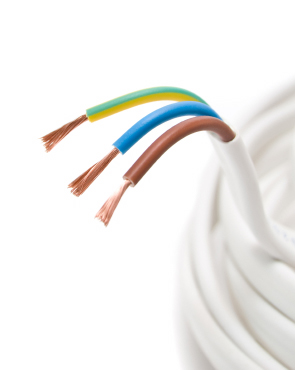It’s better to be safe than sorry

With every installation comes a particular level of responsibility – and every custom installer has an ongoing requirement to provide a duty of care to their customer that will stay cemented in place long after the job is completed.
However, an installer’s credibility also goes hand-in-hand with industry regulation and, as many are aware, this is not always as clear cut and simple to put into practice as it seems.
ADVERTISEMENT
The Australian Communications and Media Authority (ACMA), in its capacity as regulator of data comms cabling, shares a lot of common ground with the connected home industry, as the area of cabling crosses over into both realms on a daily basis. But, figuring out when they come in to play is becoming increasingly difficult.
The ACMA is a statutory authority within the Federal Government and is the regulator for broadcasting, the internet, radiocommunications and telecommunications. Under the Telecommunications Act 1997, the ACMA is responsible for regulating cabling work in a customer’s premise that is connected a telecommunications carrier’s network or is intended to be connected to a telecommunications carrier’s network (this cabling is known as customer cabling).
The fact that custom cabling may be regulated prompted the presence of the ACMA stand at the CEDIA Expo this year, which was manned by the Infrastructure Regulation Branch (Standards Section) assistant manager, Rob Pruysers.
“We have received a few enquiries from people who wanted to know if the home automation industry is regulated and if custom cablers are required to become ACMA-registered cablers,” he says.
“Basically, any cabling that requires connection to a carrier’s network is customer cabling and must be installed and maintained by a registered cabler. If custom cablers connect Cat 5 cabling for example in a home to a carrier’s network or cable any equipment that is intended to be connected to a carrier’s network they have to be a registered cabler.”
This may directly impact on custom installations, such as for example cabling IP-enabled equipment.
Originally, the ACMA implemented a ‘grace period’ in the form of a digital data exemption (DDE) for security, fire and data cabling which generally speaking is cabling that isn’t directly connected to a carrier’s network unlike normal telephone services which have been required to be installed by registered cablers from the start of regulation in 1989/90. After the exemption running its course from 1989/90 until 2000, the exemption was removed which unfortunately did create some confusion in the cabling industry.
To ensure custom installers do not perform illegal cabling work, Rob suggests that custom installers work under the assumption that all connected home cabling is regulated by the ACMA.
“However, if you look at the antenna installation industry, there is some confusion about whether they come under our regulation. The answer is that they don’t, but on the other side of the coin a lot of people in the industry would like it to be regulated. An antenna would traditionally connect to a TV that may link to a set-top-box, so this creates the impression that this is customer cabling in effect,” he says.
“The important distinction is this: unless the cabling is actually using the carrier’s network, or it is used in conjunction with the carrier’s service, it doesn’t actually fit into the definition of customer cabling that requires that the “cabling is used or intended for use on the customer side of a telecommunications network”. An antenna installation only receives a broadcast signal and doesn’t “use or intend to use” a carrier’s network for any purpose.”
Given this complex situation, Rob says that the ACMA considers everything on a case-by-case basis, which will involve looking at the cabling’s function in relation to a carrier’s service.
So, what’s the best way for an installer to approach this situation? Rob suggests that the general advice is simple: it’s better to be safe than sorry.
“The thing to remember is that cablers complete a range of work. Most of the cabling work they do will be captured under our regulation and some of it won’t, but you can’t complete “customer cabling” unless you’re registered.”
The other point to consider is weighing up the consequences. It costs around $30 a year to be a registered cabler, but the maximum penalty for an unregistered cabler who is caught completing customer cabling can tally up to $13,200. An on-the-spot fine is usually 10% of this amount.
For those who decide that registration is the way to go, you can complete training at any Registered Training Organisation (RTO) and then register with one of five ACMA-accredited registrars that provide national cabler registration services on the authority’s behalf. The registrars include the Australian Security Industry Association Limited (ASIAL), BICSI Registered Cablers Australia, TITAB Australia Cabler Registry Services, Australian Cabler Registration Service (ACRS) and the Fire Protection Association Australia (FPAA).
Information on training can be obtained on the ACMA web site on link: http://www.acma.gov.au/WEB/STANDARD/pc=PC_1471
“At the end of the day, the law and the hip-pocket are the main drivers of registered cabling. You can use this qualification to do other cabling work such a telephone cabling and to also qualify to work with other potential telecommunications employers as they will often require you to be a registered cabler when applying for a job,” Rob says.
“Remember if you’re charging a professional fee to your client, you have a professional obligation to be appropriately qualified to do the job. The client has a certain expectation of the installation outcome and if it doesn’t work like it’s supposed to and you’re not registered, you could be open to a liability that leaves you facing a hefty fine.”
Contact:
Australian Communications and Media Authority
www.acma.gov.au
-
ADVERTISEMENT
-
ADVERTISEMENT

